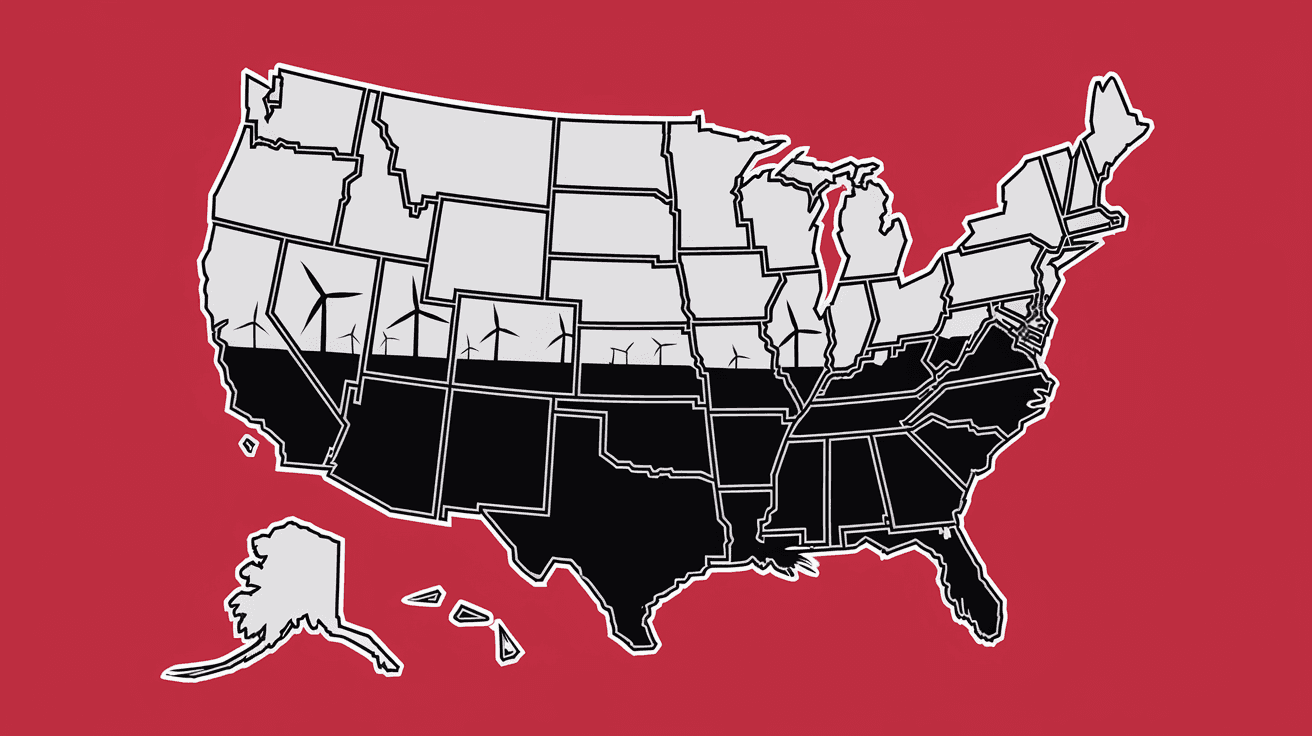DeepSeek’s Energy Breakthrough: A New Era for AI
DeepSeek’s energy-efficient AI model reshapes global energy and tech landscapes.
Energy Innovation & Infrastructure
·
3 min
DeepSeek, a Chinese AI startup, has disrupted the global AI landscape with its energy-efficient model. The breakthrough sent shockwaves through U.S. markets, causing stocks of tech giants like Nvidia, Microsoft, and Google to plummet 1. This development challenges long-held assumptions about AI’s energy demands and reshapes competition between the U.S. and China in the tech sector.
Why DeepSeek Matters
DeepSeek’s innovation lies in its ability to drastically reduce energy consumption compared to existing models. Unlike traditional AI systems that rely on massive computational power, DeepSeek employs reinforcement learning—a method focused on self-correcting rewards and progressive inputs 1. This approach allows it to operate with fewer chips and less energy, making it more accessible and scalable.
The model is also open-source, enabling users to customize it for specific needs under a standard MIT license. This dual strategy—catering to both individual users and developers—has proven effective, as DeepSeek currently tops app store charts while gaining significant market value 1.
Researchers at the University of California, Berkeley, have replicated DeepSeek’s core model using less than $100 worth of equipment, underscoring its accessibility and potential for widespread adoption 1.
Implications for Energy Demand
AI has long been criticized for its high energy consumption. For example, a single ChatGPT search requires at least 10 times more energy than a standard Google search 1. Projections from 2024 estimated that AI could consume as much electricity as Japan by 2030 if trends continued 1.
DeepSeek’s breakthrough offers a way to mitigate this growing demand. By reducing the energy required for AI operations, it alleviates pressure on power grids and lowers costs for companies and consumers alike. This shift is particularly significant for regions like northern Virginia, where AI data centers have strained local energy infrastructure 1.
Challenges for U.S. Tech Giants
American companies now face a reckoning. Investments in energy-intensive infrastructure such as Google’s Small Modular Reactors and OpenAI’s nuclear fusion projects are at risk of becoming obsolete. Chevron’s plans to build natural gas plants for AI data centers may also need reevaluation.
The U.S. national AI strategy, anchored by initiatives like Project Stargate a $500 billion plan to bolster AI dominance relies heavily on scaling resources and energy. DeepSeek’s success undermines this approach, forcing policymakers to reconsider their focus on centralized, resource-heavy strategies.
China’s Strategic Gains
For China, DeepSeek represents a pivotal moment. Even if criticisms of the model prove true, it establishes China as a peer competitor in AI. If its advantages hold, Beijing could overcome key obstacles, particularly energy constraints, that previously hindered its progress.
This comes amid broader positive developments for China’s energy sector. Recent statistics show rising energy usage alongside declining emissions, reflecting successful investments in nuclear and renewable energy. These advancements position China to capitalize on AI innovations like DeepSeek.
A Paradigm Shift
DeepSeek marks a turning point in AI and energy policy. It challenges the assumption that AI’s energy demands will inevitably rise and resets the competitive dynamics between the U.S. and China. For the U.S., adapting to this new reality will require rethinking energy strategies and reassessing large-scale investments like Project Stargate.
In this evolving landscape, flexibility and innovation will be critical. As the rules of the game change, nations and companies must adapt—or risk falling behind .
Sources & Fact-Check
DeepSeek’s Impact on Global AI and Energy Sectors
DeepSeek’s decentralized model and energy efficiency claims are supported by expert analysis from Karen Hao, who highlights its potential to reshape the AI space
CNBC reports that DeepSeek’s R1 model outperforms OpenAI’s o1 while costing significantly less, underscoring its cost and energy advantages
Apple CEO Tim Cook acknowledged DeepSeek’s innovation, stating it “drives efficiency,” further validating its technological impact
Vox notes that DeepSeek’s user-friendly interface contributes to its popularity, but its energy-efficient design is a key factor benefiting the entire AI industry
Concerns about data security were raised in a report highlighting that DeepSeek sends U.S. user data to China, adding complexity to its role in global AI competition



